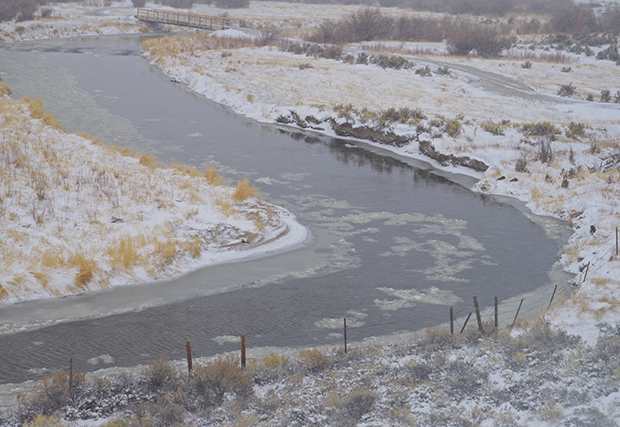Trekking Part 3: Learn about Church Historic Sites on ChurchofJesusChrist.org
Contributed By Carolyn Call, ChurchofJesusChrist.org staff writer

Members trekking at Martin's Cove, Wyoming, located on the Mormon Trail.
Article Highlights
- Explore a Church historical site and learn what happened there.
- Apply what you learn about pioneers' faith and obedience to your own life.
Related Links
Martins Cove, Devil’s Gate, and Rocky Ridge—these are a few of the places where handcart pioneers experienced the hardest trials and the greatest miracles. Many other historic pioneer sites not included on the official handcart trail also provide great insight and inspiration to all who visit.
Many youth on pioneer treks will have a chance to experience life on the trail as well as read and learn from stories of handcart pioneers. Some may even have the chance to travel on or near the sites where these stories and miracles occurred. Even if your trek activity isn't located near a Church historic site, visiting these places—even if it's just online—will help you gain a greater appreciation for the pioneer experience.
Priesthood restoration site
The Priesthood restoration site in Susquehanna County, Pennsylvania, isn’t a handcart trek site. However, it still a place that youth and leaders can visit to learn and understand more about the Priesthood’s role in Church history and in their lives.
Many sacred occurrences happened in Susquehanna County. Joseph Smith was blessed with 15 revelations that are now published in the Doctrine and Covenants. More of the Book of Mormon was translated here than anywhere else.
Visitors can learn more about the 15 revelations in the visitor’s center. They can also visit the wooded area where John the Baptist appeared to Joseph Smith and Oliver Cowdery and restored the Aaronic Priesthood. The home of Isaac and Elizabeth Hale is nearby, along with the home of Joseph and Emma Smith.

Wooded area at the Priesthood Restoration Site.
Martins Cove
Numerous trek groups frequent this well-known historic pioneer site every year. This is the place where rescuers brought the Martin and Willie handcart companies amid the harsh conditions of a Wyoming winter.
Cyrus Wheelock was one of the rescuers who accompanied the Saints to Martins Cove. His dedication to the service of others is evident in a text he wrote that later became the hymn “Ye Elders of Israel.” After rescuing the Saints, another pioneer named John Jacques observed: “[Cyrus Wheelock] declared that he would willingly give his own life if that would save the lives of the emigrants.”

Hundreds of pioneers died of exposure and starvation before rescuers from the Salt Lake Valley brought them to Martins Cove.
Sixth Crossing
The Willie handcart company was rescued at this site. It was here at Sixth Crossing, by the Sweetwater River, that 15-year-old George Cunningham had a dream about rescuers who were coming to save them. The next day, he watched as four rescuers rode into camp on horseback, just as he had dreamed the night before.
Mary Hurren, who was seven years old when she made the trek, wrote about the miraculous rescue at Sixth Crossing: “As a small girl I could hear the squeaking of the [rescue] wagons … Tears streamed down the cheeks of the men, and the children danced for joy.
“As soon as the people could control their feelings, they all knelt down in the snow and gave thanks to God for his kindness and goodness unto them.”

Ice floats on the Sweetwater River at Sixth Crossing Visitors Center in Wyoming.
Cove Fort
As the Saints moved to new settlements outside of the Salt Lake Valley, way stations were needed for settlers, mail couriers, stagecoach operators, and other travelers. Brigham Young called Ira Hinckley, grandfather of President Gordon B. Hinckley, to move from his home in Coalville to south-central Utah and establish Cove Fort there. For the Saints and settlers, the fort represented a place of protection, safety, and hospitality.
Even if guests had no way to pay for their stay at the fort, they were never turned away. Today the fort stands as a symbol of the faith and obedience of Saints and others who helped establish settlements in Southern Utah.

Cove Fort represented a place of protection, safety, and hospitality for early saints and settlers in Utah.
Where stories come alive
As youth and leaders visit and learn about the sites where faith-promoting experiences happened, they gain appreciation for the faith, obedience, and sacrifice of the early Saints of the Church. Pioneer stories can be sources of encouragement and inspiration that take on more meaning through visiting the sites where these experiences took place.
